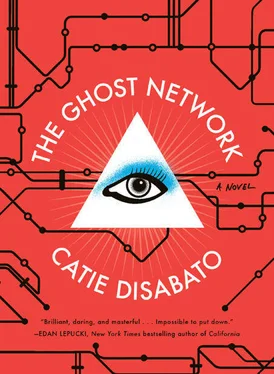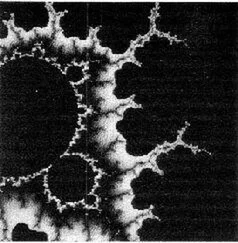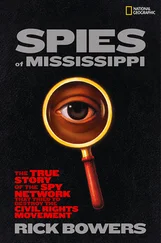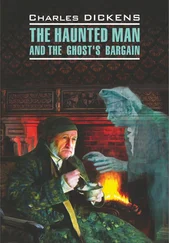While skimming the documents in the first box, Berliner found a letter from David Wilson to the NS’s president, which mentioned the New Situationists’ “digital and physical archives.” It seemed strange to Berliner that the New Situationists would keep any kind of official archive at all — they had preached to their membership that any archive could be compromised — so he started looking through the documents for any other references to digital records. Eventually, he found another letter from Wilson to the president, asking about the “progress of the map archives and the L project.” Berliner spent a few hours searching for the president’s response to Wilson, and he eventually found it, crumpled at the bottom of the second box of documents. The president told Wilson he had nearly completed digitizing all the necessary maps for the “L project,” and that they were only waiting for a few important maps from the early 1940s, and then they would have “a complete archive of every iteration.” n
Berliner hurried through document after document, looking for more mentions of the L or the map project. He found a few scattered remarks — one member was bored with researching historical proposals for additions to the L lines that had never been adopted, and wanted to be assigned another task; another apologized profusely to the president as he reported that a certain map the president wanted no longer existed in Chicago’s public archives — and Berliner began to understand, at least in part, what the New Situationists had done. They had collected all of the maps of the Chicago elevated train system, including both historical maps from every year the L existed, as it expanded and contracted and morphed, and maps of every addition or change to the L proposed to the Chicago Transit Authority, including those that had been rejected. Every map of the L as it had once been, every map of the L as it could’ve been but wasn’t; a full historical record of every L station and every station that was proposed but wasn’t built.
Berliner knew from the documents that the New Situationists were actively collecting maps, but he didn’t know for sure if they had acquired them all or what they did with them once they had.
While she listened to Berliner explain his findings, Molly didn’t ask questions, but she did stop him several times to examine a section of a letter or a document he mentioned. Once Berliner finished talking, she wordlessly wandered back into the smoking room. Berliner followed her. She sat in one of the armchairs, lit a cigarette, and asked Berliner to pour her a little glass of whiskey. He poured hers and one for himself, and sat in an armchair. After a half a minute of silence, while Molly smoked, drank, and stared at the wall lost in thought, Berliner lit his own cigarette. She stayed silent while he smoked; when he smashed his cigarette butt in the ashtray, Molly Metropolis gave Berliner his task. He would recreate the New Situationists’ map archive. Then she would take every map he collected and put them all together, into one giant map. She and Berliner would be able to see what the New Situationists had been building. They would have the New Situationists’ complete knowledge of the L and would see what they wanted from it.
Molly knew she and Berliner couldn’t complete such a huge task on their own, especially with her music career taking up more of her time; she would have to expand the Urban Planning Committee. Molly told Berliner she wanted to invite the two other people Molly trusted most, her friends and dancers, Ali and Peaches.
Ali and Peaches exist mostly in the corners and rough edges of the early days of Molly’s career. They were with her before the entertainment and fashion media tried to squish her life into an easily repeatable narrative. Early magazine and newspaper profiles on Molly, in outlets like Interview Magazine and Australia’s Sydney Morning Harold , comment on the dancers’ presence, but their influence on Molly, both artistically and through their friendship, is rarely commented upon.
Ali and Peaches appear in the opening of the “Don’t Stop (N’Arrête Pas)” music video, as Molly’s friends, helping her crash a Gatsby-esque mansion party. When Molly performed at the Echo-plex in Los Angeles in May 2008, they stacked themselves on top of each other to form a human keyboard stand while Molly played her stripped-down version of “Heart Machine.” They danced when she opened for Jennifer Lopez — all before any radio station ever played “Don’t Stop.”
The dancers’ most striking appearances, though, weren’t in music videos or appearances or marketing materials, but in interviews. For video and print interviews alike, Ali and Peaches accompanied her, dressed exactly the same as Molly. As Molly debuted herself to the world, they were her shadows. No one knew why. They didn’t look like Molly, and they are both white, so they didn’t read as body doubles or decoys to fool the paps.
At least once an interview, in response to a question, Molly would whisper something into either Ali or Peaches’s ear and they would recite her answer for her. Journalists called their presence “bizarre” or “inexplicable.” MTV News’s Dana Andapolis wrote that Molly chose “random” questions for her dancers to respond to on her behalf, but there is in fact a method to this particular madness of Molly’s. oWhenever she was asked a particularly invasive question about her biography or romantic life, she made Ali and Peaches answer. She outsourced the most emotional responses to her best friends. She also used the low buzz around this “bizarre” practice as a way to show her sense of humor. For her first major U.S. late-night appearance on CBS’s The Late Late Show with Craig Ferguson , when Ferguson announced her, Peaches walked out instead.
Ali, a dropout of the School of American Ballet in New York, had thick red hair, a narrow jaw, and incredibly long legs that Molly admired and envied. Peaches was taller, but all torso, with a huge smile, dirty blonde hair, and a tendency to freckle in the summer. Molly, Ali, and Peaches spent most of their working days together and became close friends. They frequently videotaped each other and a few of their exploits found their way onto YouTube. In one video, they goof around, prancing around in Wicker Park, and in another they roll around on the floor of a spa, after a massage and a steam. In the third, they discuss the nature of art and performance while waiting for a flight at an airport. p
In early 2007, after Molly signed with SDFC and found Ali and Peaches, but before the record company released “Don’t Stop (N’Arrête Pas)” as a single, the pre — pop star Molly kept no one closer than her dancers. She bounced ideas off them and socialized with them; she used them as sounding boards, companions, and shields. In the morning, when she woke up with a new idea that excited her to her core, Molly would call Ali. In the evening, exhausted by dance training or a long day at the recording studio, arguing with her handlers, Molly would curl up on a big leather couch with Peaches and they would softly sing “Row Your Boat” in canon. They recorded their sing-along once and uploaded the video to YouTube. qa Ali and Peaches were Molly’s first disciples, the first to wear outfits she designed and the first to stand behind her when she declared herself a “pop performance artist.” They were the first to take her seriously, and although Molly rewarded them with loyalty, she didn’t give them honesty. She was hard on them.
On the night of Molly’s Lollapalooza performance, after she had returned from her meeting with Berliner, Ali and Peaches joined her at the SDFC Lollapalooza after-party at The Drawing Room on the Near North Side. They wore their Metro-designed outfits — black skin-tight deep-V shirts and copper-colored leggings — and mingled with other SDFC artists and Lollapalooza performers for nearly an hour before Molly pulled them away from the party. They hailed a taxi and rode to their hotel, the Congress. Berliner was waiting in Molly’s small room. The dancers crowded in, and Molly introduced them to one another.
Читать дальше












